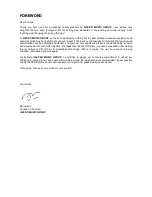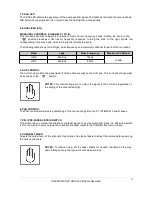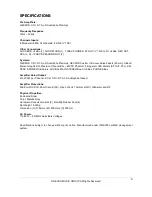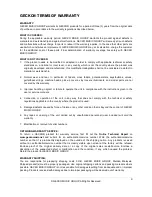
3. PEAK LED
The PEAK LED detects the peak level of the post-equalizer signal, and lights up red when the level reaches
3dB below the clipping level. It is normal to see the LED lights up occasionally.
4. EQUALIZER (EQ)
MONAURAL CHANNELS (CHANNELS 1 TO 8):
This two-band equalizer adjusts the channel’s high and low frequency bands. Setting the knob to the
position produces a flat (linear) frequency response. Turning the knob to the right boosts the
corresponding frequency band, while turning to the left cuts the band.
The following table shows the EQ type, base frequency, and maximum cut/boost for each of the two bands.
Band
Type
Base Frequency
Maximum Cut/Boost
HIGH
Shelving
12kHz
±15dB
LOW
Shelving
80Hz
5. AUX CONTROL
The AUX knob controls the signal level that the channel sends to the AUX bus. This knob should generally
be set close to the
position.
NOTES:
This control allows you to output the signal to the AUX bus regardless of
the setting of the channel fader [8].
6. PAN CONTROL
The PAN control determines the positioning of the channel’s signal on the ST (STEREO) L and R buses.
7. PFL (PRE-FADER LISTEN) SWITCH
This switch lets you monitor the channel’s pre-fader signal. To set the switch ON, press it in. When the switch
is ON, the mixing console outputs the channel’s pre-fader signal to the PHONES bus for monitoring.
8. CHANNEL FADER
Adjusts the output level of the channel's input signal. Use these faders to adjust the volume balance among
the various channels.
NOTES:
To reduce noise, set the fader sliders for unused channels all the way
down. Always ensure that you work with clean sources.
______________________________________________________________________________________
3
3
© GECKO MUSIC GROUP. All Rights Reserved.















